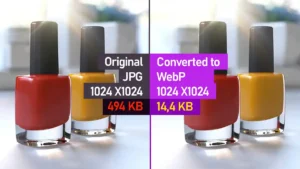Apple’s Acquisition of Pixelmator: What It Means for Designers and Competitors
Apple’s acquisition of Pixelmator, a leading image editing tool, strengthens its ecosystem with software optimized for Apple devices. Pixelmator, known for its intuitive interface and AI-driven features, is popular among designers and creators for both quick edits and complex illustrations.
This strategic move gives Apple greater control over creative tools within its ecosystem. The acquisition aligns with Apple’s history of integrating native products and services to elevate user experience.
The move suggests a future integration of Pixelmator with macOS and iPadOS, delivering high-quality image editing without third-party software. Already robust and efficient, Pixelmator is likely to benefit from more frequent updates and closer support, enhancing user experience even further.
Apple’s acquisition also signals a direct response to Adobe, Affinity, and Canva, which recently acquired Serif, the developer of Affinity. By adding these native capabilities, Apple positions itself to offer a powerful solution that could attract professionals and enthusiasts in the competitive image-editing market.
Advanced Features of Pixelmator: AI and Intuitive Design
Pixelmator is recognized for its advanced features, particularly artificial intelligence in image editing. Tools like background removal, mask design, and auto color adjustments are highly efficient and intuitive, enabling high-quality results with minimal effort. This level of automation and ease-of-use positions it ahead of many traditional software options, especially for users who prioritize speed and usability.
Pixelmator’s streamlined interface is designed to make workflow smoother for designers and editors. With a well-organized toolbar and functions that reduce editing time, the software is ideal for both professionals and casual users. The ability to work with layers, along with various illustration tools, makes it a practical choice for diverse graphic projects.
With Apple’s backing, Pixelmator is expected to expand its capabilities, potentially integrating more with other platforms and devices. New features could include augmented reality and optimizations for Apple’s M1 and M2 chips, making the software even more versatile and efficient for Apple devices.
Market Impact of Apple’s Acquisition of Pixelmator
Apple’s acquisition of Pixelmator places the company in a stronger position within the creative software market. While Adobe and Affinity continue to innovate, having a native editor within macOS and iPadOS could reduce users’ dependence on external options, positioning Pixelmator as a primary competitor in a market previously dominated by Adobe.
This next phase of Pixelmator, supported by Apple’s resources and development team, could strengthen Apple’s ecosystem, drawing even more users to its devices. For consumers, the promise is a smoother and more integrated image editing experience, free of expensive subscriptions or third-party apps. For the market, it signals that Apple is ready to establish a stronghold in the digital design arena.
This acquisition may intensify competition, pushing other companies, like Adobe, to provide more value to their Apple-using customers. In the long run, this competition could benefit consumers with more choices in design software at competitive prices and an even greater diversity of features.
Competitive Landscape: Apple vs. Adobe, Affinity, and Canva
Apple’s acquisition of Pixelmator directly challenges established industry players like Adobe, Affinity, and Canva. Each of these competitors serves distinct audiences with unique strengths, but Apple’s entry into this space adds a new level of competition, especially following Canva’s recent acquisition of Serif, which brought the Affinity Designer, Affinity Photo, and Affinity Publisher into its offerings.
Adobe leads the market with a comprehensive portfolio. However, Apple’s focus on a natively optimized software could attract users seeking seamless integration with Apple devices.
Affinity, by contrast, has built a strong following. It appeals to users looking for powerful tools at a one-time purchase price.
Meanwhile, Canva, which dominates in online and social media design, now aims to expand its reach in professional graphic design.
By bringing Pixelmator under its umbrella, Apple can offer a focused and efficient software solution. It’s natively optimized for its hardware and backed by direct support.
This proposal is likely to appeal to new users, further solidifying Apple’s position against Adobe and other alternatives.
This evolving landscape promises tech advances and aggressive market strategies, benefiting both users and design professionals.
The Future of Image Editing in the Apple Ecosystem
With Apple’s acquisition of Pixelmator, the future of image editing on the Apple platform promises exciting advancements. Apple will likely deliver more frequent updates to Pixelmator and introduce new features specifically designed for iPadOS and macOS. Integrations with Apple Silicon (M1 and M2 processors) should optimize performance and bring exclusive functionalities to Apple devices.
Potential developments include better compatibility with other Apple products, such as direct iCloud syncing for storage and sharing, or even AR (augmented reality) features. For professionals, this means an even richer and faster editing experience that fully leverages Apple’s hardware capabilities.
In the long run, Pixelmator’s integration could encourage more users to adopt Apple devices for design, photography, and illustration projects. This move is set to deepen Apple’s hold on the creative user base, expanding its competitive edge and providing an exclusive advantage over rivals.
Redefining the Creative Market with Apple’s Acquisition
Apple’s acquisition of Pixelmator expands its software lineup and strengthens its strategy to impact the creative sector. With this move, Apple makes image editing more accessible and seamlessly integrated into its ecosystem.
This acquisition aligns with Canva’s recent purchase of Serif in March 2024 to enhance its professional design tools.
As the design market evolves, users can expect continuous innovation and improved tools as competition intensifies.
FAQ – Frequently Asked Questions on Apple’s Acquisition of Pixelmator
What Is the Purpose Behind Apple’s Acquisition of Pixelmator?
Apple aims to strengthen its ecosystem with native image editing tools, expanding its reach in the creative sector.
What are Pixelmator’s main features?
Pixelmator offers AI-powered editing, background removal, mask design, and intuitive illustration tools.
How will this acquisition affect users?
Users can expect more integration within Apple’s ecosystem and access to new features on iPad and Mac.
What does this purchase mean for the design software market?
Apple now poses a direct challenge to Adobe, Affinity, and Canva in the design industry.
What’s the outlook for Pixelmator’s future?
Pixelmator is set to become more efficient, with optimized performance for Apple’s processors and potential iCloud integration.



